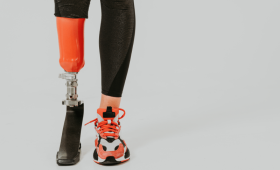What does the 35th week of pregnancy mean?
The 35th week of pregnancy means that the end of the third and final trimester is approaching, and there are only a few weeks left until birth. In this week, the baby has acquired the appearance of a full newborn, and its body has become plumper. Since it fills the space in the mother’s womb and its movements are more limited, the character of its movements may change. During this period, the expectant mother begins to focus on preparations for birth, and her body also gradually begins to prepare for labor. The baby’s descent towards the birth canal can also begin in these weeks.
What does the baby look like and how big is it in the 35th week?
In the 35th week, a baby reaches the size of an average melon and weighs approximately 2.4 to 2.7 kilograms. Its length is around 46 centimeters. Its body becomes rounder, and the fine hairs on it, called lanugo, begin to shed. The fat layer under the skin thickens, helping the baby to maintain its body temperature. In this week, the baby’s face and body become smoother. Its nails have grown long, its hair has thickened, and it can react to sounds from the outside world.
What changes occur in the expectant mother’s body?
This week, significant physical changes occur in the expectant mother’s body. The top of the uterus rises up to just below the rib cage, which can cause shortness of breath and pain in the ribs. Itching may increase as the skin of the abdomen stretches. Fatigue and sleep problems may be more frequent. Swelling in the hands and feet (edema) may occur due to hormonal changes and increased blood volume. Heartburn and the need to urinate frequently are also common complaints.
What are the common physical complaints?
In the 35th week of pregnancy, the most common complaints of expectant mothers include shortness of breath, back pain, fatigue, leg cramps, and frequent urination. Due to the baby’s increased weight and the shift in the body’s center of gravity, back pain may become more pronounced. Leg cramps are usually bothersome at night and can be caused by magnesium deficiency. Shortness of breath is caused by the pressure of the growing uterus on the lungs.
How do the baby’s movements change?
Although the baby’s movements become more regular and distinct in the 35th week, the character of the movements changes. Since the baby now takes up less space in the mother’s womb, it performs more pushing, stretching, and kicking movements instead of somersaulting or turning. These movements may be more noticeable for the expectant mother. If you notice a sudden and significant decrease in movements, it is vitally important to contact your doctor immediately.
How do I know I’m getting closer to labor?
Signs that labor is approaching include Braxton Hicks contractions (false contractions) becoming more frequent and more intense. In addition, pressure and pain can be felt in the pelvis and pelvic area as the cervix muscles stretch. An increase in discharge and a change in its consistency (the show) are also a sign that labor is approaching. Shortness of breath may ease as the baby’s head descends into the birth canal.
What tests are done in the 35th week?
In the 35th week, a non-stress test (NST) and an ultrasound examination are usually performed during a doctor’s check-up. The NST evaluates the baby’s health by monitoring its heart rate and uterine contractions. The ultrasound checks the baby’s estimated weight, position, and the amount of amniotic fluid. In addition, the cervix can be checked during prenatal check-ups, and a vaginal and rectal swab can be taken for a streptococcus (GBS) test.
What should nutrition be like this week?
Continuing to eat a healthy and balanced diet in the 35th week is very important. Consuming enough protein, fibrous foods, and healthy fats keeps energy levels high and prevents constipation. Drinking plenty of water maintains the body’s water balance and helps reduce edema. Eating small and frequent meals is a better option to reduce the heartburn that is common during this period.
What vitamins and minerals do I need in the 35th week?
In this final stage of pregnancy, the intake of iron, calcium, and vitamin D is of great importance. Iron is necessary to support the increased blood volume and prevent anemia. Calcium and vitamin D support the baby’s bone and tooth development. You should continue to regularly use the supplements recommended by your doctor.
How to cope with fatigue and sleep problems?
Increased fatigue and sleep problems are common in these weeks. Sleeping on your left side reduces the pressure of the growing uterus on the major blood vessels and improves blood circulation. Taking a warm shower before bed, doing relaxation exercises, or drinking a light herbal tea (after consulting your doctor) can improve sleep quality. Taking short naps during the day can also be beneficial.
Why do leg cramps occur and how can they be prevented?
Leg cramps are common during this period and are usually caused by a deficiency of calcium or magnesium, and sometimes by the pressure of the growing uterus on the nerves. To prevent cramps, it can be beneficial to do stretching exercises for the leg muscles before bed, drink plenty of water, and use the supplements recommended by your doctor. When cramps start, you can relieve them by stretching your leg.
How to cope with stress and anxieties?
As labor approaches, the expectant mother may experience stress and anxiety. To cope with these feelings, it is important to get support from your partner, family, or a specialist. Practicing relaxation techniques such as breathing exercises, meditation, and prenatal yoga can help reduce stress. Talking openly with your doctor about your fears of childbirth will also comfort you.
When should I pack my hospital bag?
It is a good idea to start packing your hospital bag in the 35th week. This will prevent stress that can occur at the last minute and ensure you are prepared for any early labor situations. The bag should contain basic supplies such as comfortable clothes for the mother, personal hygiene products, nursing bras, and first clothes for the baby, a blanket, and diapers.
What happens if the baby is born in the 35th week?
Babies born in the 35th week are medically classified as “late preterm” babies. Although their lungs are almost fully developed, they may need respiratory and nutritional support. These babies are usually discharged after being monitored for a while in the neonatal intensive care unit (NICU). Your doctor will monitor you closely to prevent this situation.
What does it mean for the baby’s head to engage in the birth canal?
The engagement of the baby’s head in the birth canal, which usually occurs between 35-37 weeks, is a sign that labor is approaching. This is a feeling that the baby has settled deeper into your pelvis. As a result, the expectant mother may experience less shortness of breath but may feel the need to go to the toilet more often due to the increased pressure on the bladder.
What do Braxton Hicks (false contractions) feel like?
Braxton Hicks contractions are irregular and generally painless contractions of the uterus. Unlike true labor contractions, these contractions are irregular, do not become more frequent over time, and usually stop when you change your position or walk. These contractions are considered practice for the body in preparation for labor.
What preparations should be made for postpartum recovery?
You can make some preparations for postpartum recovery now. Kegel exercises, which strengthen the pelvic muscles, help to make labor and the recovery process easier. It is also important to get postpartum supplies such as comfortable clothes and maternity pads in advance. Additionally, planning to get help from your spouse or family for baby care will reduce your stress.
Can I continue to exercise this week?
Yes, as long as your doctor approves, you can continue to exercise in the 35th week. However, lower-intensity and light exercises should be preferred during this period. Activities such as walking, swimming, prenatal yoga, and stretching help both prepare your body for labor and reduce your stress. You should avoid heavy lifting and high-effort sports.
Why does the baby’s growth rate slow down?
From the 35th week, the baby’s growth rate slows down a little. This is because the baby’s internal organs and body systems are now fully developed. The baby focuses more on gaining weight and increasing its fat layer. However, since the baby’s weight continues to increase, the total weight gain continues.
Why are sleep positions important?
Sleep positions are very important during this period of pregnancy. Lying on your back can cause the weight of the growing uterus to put pressure on major blood vessels, slowing down blood circulation. Therefore, lying on your left side is the most ideal position. This position increases blood flow to both the mother and the baby and helps reduce edema.
What are the skin changes?
In the 35th week of pregnancy, some changes may occur in the skin due to hormonal changes and skin stretching. Itching in the abdominal area may increase, stretch marks may become more prominent, and the formation of the pregnancy mask (chloasma) on the face may continue. It is important to keep the skin moisturized and avoid scratching. Using sunscreen also helps prevent staining.
How does the mother’s emotional state change?
In the final weeks of pregnancy, the mother’s emotional state can be up and down. Both excitement and anxiety can be experienced together as labor approaches. Sometimes, the expectant mother may be impatient with the thought, “When will I meet my baby?” These feelings are normal, and getting support from your spouse, family, or friends will help you get through this process more easily.
How does weight gain continue in the 35th week?
In the 35th week, the mother’s weight gain usually continues and can be around 250-500 grams per week. The baby’s growth, the amount of amniotic fluid, and the weight of the placenta are the main reasons for this weight gain. Continuing to eat a healthy diet prevents excessive weight gain and facilitates the body’s recovery after birth.
How is the baby’s body temperature maintained after birth?
The fat layer under the baby’s skin continues to thicken in the 35th week, and this is vital for maintaining its body temperature after birth. This fat layer serves as an energy and heat reserve for the baby. Keeping the baby dry and warm immediately after birth is critical for the development of this function initially.
How to relieve heartburn and digestive problems?
Heartburn and digestive problems can be seen more often during this period due to the pressure of the growing uterus on the stomach. To reduce these complaints, it is important to avoid spicy, oily, and acidic foods. Eating small and frequent meals, not lying down immediately after eating, and sleeping with your head elevated can also provide relief.
Why does vaginal discharge increase?
An increase in vaginal discharge in the 35th week is normal. This discharge is usually clear and odorless. This is a natural preparation the body makes to prevent infections and clean the birth canal. However, if you notice a change in the color, smell, or consistency of the discharge, or if there is bloody discharge (the show), you should contact your doctor immediately.
How can measures be taken for postpartum depression?
Measures for postpartum depression (PPD) can begin during the pregnancy period. Sharing your emotional state with your spouse or a trusted loved one, joining support groups, and paying attention to your sleep schedule can help reduce this risk. If you have concerns about this, do not hesitate to seek support from a specialist.
How can pregnancy stretch marks be prevented or alleviated?
Pregnancy stretch marks usually occur due to genetic predisposition. However, using stretch mark cream or natural oils to keep the skin moisturized and increase its elasticity can be beneficial. Drinking plenty of water and eating a healthy diet also supports the skin’s moisture balance from the inside.
What is the importance of the 35th week in the baby’s organ development?
Most of the baby’s organs are fully developed by the 35th week. Its lungs are almost mature and ready for self-breathing. Its kidneys are fully functional, and its liver begins to process some waste products. In this week, the baby’s nervous system also continues to mature rapidly.
What should be done for postpartum pain and swelling?
Some measures can be taken in advance to reduce postpartum pain and swelling. From this week, light walks and drinking plenty of water can help reduce edema by increasing blood circulation. It will also be beneficial to research and prepare pain relief methods like hot and cold compresses for after birth.



